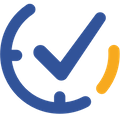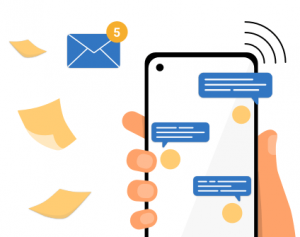In today’s digital ecosystem, our attention is under constant siege. We’re bombarded by a relentless stream of emails, notifications, and data points, each vying for our focus. The average professional now grapples with 121 emails daily, checks their phone 58 times, and dedicates over 3 hours to apps. This isn’t just noise—a cognitive onslaught that fragments our concentration depletes our mental energy, and often leaves us accomplishing less than we intend. The impact on our productivity and effectiveness is profound, yet frequently underestimated.
This article delves into the habits that silently undermine our productivity in the modern workplace. We’ll go beyond obvious time-wasters to uncover the subtle culprits—like the “quick email check” that can derail focus for nearly half an hour, and explore practical strategies to overcome these challenges.
1. The Email Trap: Breaking Free from the Inbox Obsession
The email trap is a familiar scenario for many of us. We compulsively refresh our inboxes, anticipating that crucial message or update. However, this seemingly innocent habit can be a major productivity saboteur.
You’re not just losing those few seconds every time you pause your work to check your email. You’re disrupting your entire cognitive flow. Research from the University of California, Irvine, reveals that it takes an average of 23 minutes and 15 seconds to regain focus after an interruption fully. This means that a quick 30-second email check can cost you nearly half an hour of productive time.
So, how can we break free from this cycle? Consider implementing a strategy like the “batch processing” method advocated by time management expert Julie Morgenstern. This involves designating specific times during the day for checking and responding to emails, such as 10 AM, 2 PM, and 4 PM. Outside of these windows, keep your email client closed to minimize temptation. Additionally, leverage email management tools to your advantage. Use filters to automatically sort incoming messages by priority, sender, or project. By doing this, you’ll concentrate on important messages when reviewing your inbox, avoiding distraction from less crucial correspondence.

2. Smartphone Addiction: The Silent Productivity Thief
Smartphones have revolutionized our lives, serving as all-in-one digital tools for communication, productivity, and entertainment, yet their constant notifications create a double-edged sword: while keeping us connected, they also trigger dopamine rushes that make them irresistibly distracting. This addictive nature became starkly apparent to me when I realized I was checking my phone over 100 times daily – a habit that not only wasted countless hours but also fragmented my focus and productivity, underscoring the critical need for more intentional device usage to reclaim our time and mental energy.
To combat smartphone distractions, try these strategies:
1. Use “Do Not Disturb” during focus periods: Activate this feature to silence all notifications when you need uninterrupted concentration. Customize it to allow calls from important contacts if necessary. This creates a distraction-free environment for your most crucial work.
2. Schedule social media checks: Instead of checking social apps randomly throughout the day, set specific times for these activities. For example, allocate 15 minutes in the morning, during lunch, and after work. This helps break the habit of constant checking and makes your social media use more intentional.
3. Keep your phone out of sight: When working on important tasks, place your phone in another room or inside a drawer. Research shows that even the presence of a smartphone can reduce cognitive capacity. By creating this physical distance, you’re less likely to reach for your phone
As Tony Robbins says, “Where focus goes, energy flows.” Direct your focus towards what truly matters.
3. The Snooze Button Saga
The snooze button might seem harmless, but it can set a negative tone for your entire day. By hitting snooze, you’re starting your day with procrastination, which can snowball into larger productivity issues. Moreover, fragmented sleep between alarms can lead to increased grogginess, affecting your performance for hours.
Instead of succumbing to the snooze button, try these strategies:
1. Place your alarm across the room: This forces you to get out of bed to turn it off, making it easier to stay awake.
2. Set an energizing alarm tone: Choose a sound that gradually increases in volume or something motivating to gently rouse you from sleep.
3. Visualize your day’s goals before bed: This mental preparation can increase your motivation to get up when the alarm goes off.
4. Establish a consistent sleep schedule: Regular sleep and wake times help regulate your body’s internal clock.

4. Procrastination Station: Tackling the Big Tasks First
Procrastination on important tasks is a common productivity pitfall, often leading us to fill our time with less crucial “busy work” instead. This tendency, however, fails to account for the nature of our cognitive resources. Willpower and focus are not infinite; they are limited commodities that deplete as the day progresses. This psychological phenomenon, known as ego depletion, suggests that our ability to make decisions and maintain self-control diminishes with use, much like a muscle that tires with exertion.
Mark Twain’s colorful advice about “eating frogs” encapsulates this principle perfectly. By tackling your most challenging or important task first thing in the morning, you’re capitalizing on your peak mental resources. This approach, often referred to as “eating the frog,” ensures that you’re addressing your priorities when your mind is freshest and most capable. To implement this strategy effectively, start your day by identifying your “frog” – your most crucial task – and break it down into manageable steps if necessary. By making progress on this key task before anything else, you’re ensuring its completion and setting a productive tone for the rest of your day.
5. Meeting Madness: Reclaiming Your Time
Meetings can be productivity black holes. While collaboration is important, excessive meetings can leave you with little time for actual work.
Consider implementing these strategies:
1. Question the necessity of each meeting: Before scheduling or accepting a meeting, critically evaluate its purpose. Ask: Can this be resolved through email or chat? Is face-to-face interaction necessary? Could this be handled asynchronously? By challenging the need for each meeting, you can reduce unnecessary gatherings that eat into your productive time.
2. Set clear agendas and time limits: For essential meetings, ensure they’re structured for efficiency. Distribute a concise agenda in advance, outlining specific topics and decisions to be made. Assign time limits to each item to keep discussions focused. Consider Jeff Bezos’ “two-pizza rule” – if it takes more than two pizzas to feed the group, the meeting may be too large to be effective.
3. Explore alternative communication methods: Leverage digital tools to collaborate without traditional meetings. Use project management tools for updates, collaborative documents for brainstorming, or recorded video messages for non-real-time updates. Slack or Microsoft Teams can handle quick questions and ongoing discussions, allowing team members to engage at convenient times.
4. Implement a ‘meeting-free’ day: Designate one day per week as meeting-free for your team. This uninterrupted time allows for deep work and focused productivity. Companies like Asana and Facebook have successfully implemented this practice, reporting increased employee satisfaction and productivity.
5. Adopt the ‘speedy meetings’ setting: Use calendar apps’ ‘speedy meetings’ option to automatically end meetings early (e.g., 5 minutes for 30-minute meetings, 10 minutes for hour-long meetings). This buffer prevents back-to-back meetings from running over and gives attendees time to prepare for their next engagement.
As Jason Fried and David Heinemeier Hansson argue in “Remote: Office Not Required”:
“Meetings should be like salt – a spice sprinkled carefully to enhance a dish, not poured recklessly over every forkful. Too much salt destroys a dish. Too many meetings destroy morale and motivation.”

Recognizing these habits is the first step towards reclaiming your productivity. It’s not about perfection, but progress. Start by identifying one habit you want to change and focus on it for a week. Be patient with yourself, small, consistent changes can lead to significant improvements over time. The power to change is in your hands. Let’s make every moment count!




